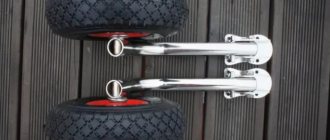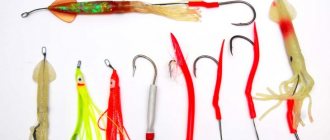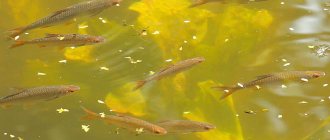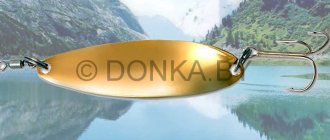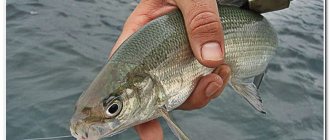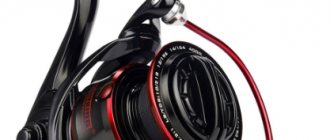Features of fishing tools
Some might argue that most jobs, including setting up rigs and removing hooks, can be done with common household tools. Scissors, pliers, and wire cutters are found in almost every home. Why spend money on buying fishing tools? The answer lies in the specifics and conditions of their use, in the characteristics of the materials from which modern gear is made. Therefore, fishing tools must meet a number of mandatory requirements.
And the first of them is anti-corrosion resistance. Household scissors and ordinary pliers will eventually become covered with a layer of rust and quickly become unusable. But specialized tools will serve for a long time and properly. They were originally designed to work with fishing gear and do not damage it, and also cause minimal harm to the fish, which is especially important for modern sport and recreational fishing. In addition, some tools are intended only for fishing and are not used anywhere else. For example, yawners, without which pike fishing can end disastrously not only for the bait, but also for the fisherman’s hands, which can be injured when removing silicone from the mouth of the toothed predator.
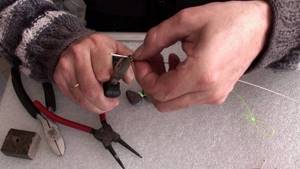
Often modern fishing tools combine several functions. Pliers can be equipped with cutting edges for fishing line and a special spike for unclamping the winding rings. Fishing scissors can also be equipped with the same element, the main function of which, of course, is cutting fishing line. By the way, braids and many monofilament threads are difficult to cut due to the properties of the materials. And in the design of specialized cutters and scissors, these features are taken into account at the development stage. Therefore, using fishing tools, no difficulties should arise. What tools do you need when fishing?
Winter fishing with a sports jig
When the arsenal of equipment for participation in the competition is carefully prepared, they think about how to effectively use their winter fishing experience, and take into account the mistakes made in previous competitions and training. It is important to anticipate what kind of jigs and attachments fishing will require from you these days, and what types of bait will be effective.
Ice fishing competitions usually last three days. The first day is devoted to training the athletes, familiarizing them with the features of the reservoir and the fish living in it. The competition itself is held over the next two days in two rounds. On an unfamiliar body of water, a winter sports jig requires certain tactics from the athlete, allowing him to quickly realize his best fishing qualities.
Participants study the reservoir in advance, the behavior of the fish, and its preferred types of gear. This information is obtained from the Internet or by communicating with amateur fishermen who visit this body of water.
Fishing tactics
Participation in the competition begins by measuring the depths of the designated area for the upcoming fishing. Study the responsiveness of fish to various baits, select suitable baits. On the first training day, the competition organizers designate the ice zones where the athletes will compete. A winter sports jig without the athlete’s tactics worked out in advance does not bring a catch.
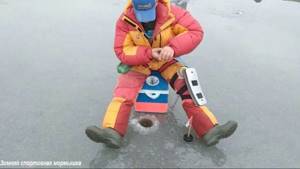
If teams compete, then ice drilling on the training day is carried out in an organized manner, making a series of holes along the border of the designated area. The distance between them should not exceed 10 meters. From the very first hole, fishing rods with jigs about 3 mm in diameter with bloodworm attachments are put out for test fishing. After making up to 10 retrieves in each hole, move on, looking for fish. When all the holes have been completed with a winter jig fishing rod, you need to throw bait into those of them where there were bites. Professionals use bloodworms for this.
Having made a circle with a test fishing rod along the drilled holes, you should measure the depths, recording the results in a notebook. If there were no bites, the circle must be repeated, and those holes where there was a bite should be marked on the drawn diagram of the competition area. Then experiment with the available gear, moving from smaller to larger ones.
Having identified which of them the fish bite better, do not stop the preparatory work, proceed to bait. First, feeding is carried out in different holes in portions of different sizes, this allows you to determine the optimal amount of food needed to keep the fish at the hole without overfeeding.
The listed tactical points are the basis for successful participation in the competition. When fishing as a team, get together after a day of training and share your observations. This will allow you to develop the basic tactics for participating in the competition.
Perch fishing
Experts consider perch to be one of the most athletic fish species. These predators often bring victories in competitions. Small perch live in almost every body of water. It goes well with roach, ruffe, bream, even pike. Perch is responsive to bloodworm baits; its activity is high in flowing reservoirs, where it remains throughout the winter.
Nowadays, under-ice sports perch jigs are popular. When training on perch, you can successfully practice the technique and tactics of behavior for the upcoming fishing competition.
Perch is partial to any form of jig, but when fishing for it, athletes prefer the following types:
- ball;
- drop;
- oatmeal.

The smaller the size of the gear, the less important is its shape. The catchers are those that are made with hooks of medium forearm length. Perch is attracted to the game of bright objects with shine. But he does not refuse the bloodworm bait lying on the muddy bottom. Winter jig fishing is especially good in those reservoirs where large perch are found in abundance. It is also capable of quickly rising upward with constant feeding directly from the ice.
Roach fishing
Do not invent special equipment for catching roach; a sports fishing rod for winter fishing for this fish is no different from equipment for catching other inhabitants of the reservoir, such as perch and bream. A short rod for roach has a sensitive nod, and a suitable attachment is suspended at the end of the fishing line. Its size and thickness of the fishing line depend on the depth from which the fish are supposed to be caught. More often, jigs are made of tungsten with a diameter of about 3 mm, and fishing line is used with a diameter of about 0.1 mm.
Fishing with a jig begins with choosing a fishing method. Unlike perch, roach does not like fast movements; playing with the bait should be smooth. Techniques such as tapping the bait on the bottom are effective in competitions, because roach prefers to take the bait close to the ground. The resulting cloudy cloud attracts this fish.
More often, bites occur during an upward movement; they are distinguished by their clarity. If there are no bites at the bottom, you should move on to playing near the ice itself. The game should be with stops and breaks, this is important when the roach bite is not active.
Often sport fishing for roach is successful with the bait standing still. Then the fisherman can hold the fishing rod securely enough. Since the bites of this fish are short-lived, have time to hook in time.
Wire cutters
Perhaps the most necessary tool for fishing is wire cutters. They can be of different designs and made from different materials, but they have only one main purpose - cutting fishing lines. Good fishing cutters are capable of cutting braided and monofilament lines, as well as various leader materials. There are two main types of nippers: classic and compact, consisting of two small plates with cutting edges on the edges. Classic models are more functional, versatile and durable. They are equipped with plastic or silicone handles, are made from solid grades of stainless steel and are capable of cutting any fishing line, including icecore used in carp fishing.
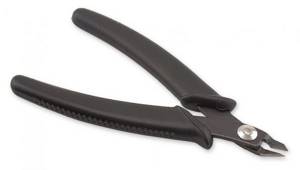
An example of a high-end nipper is the AFW Nipper Tool. The model is capable of cutting everything from metal to thin monofilament lines. Made from solid, corrosion-resistant steel, it is reliable and durable. In addition, the nippers fit comfortably in the hand thanks to rubberized plastic handles and easily fit in the pocket of a fishing jacket or vest.
The advantage of compact nippers is their minimal dimensions, which allows you to carry them with you while fishing. Therefore, spinning anglers very often prefer this option.

The Favorite AE-002 line cutter is a typical example of a highly functional line cutting tool. The model is made of stainless steel and will definitely come in handy on every fishing trip. A needle is attached to the rotating unit between the plates and is intended for untangling knots. In order not to lose such a miniature instrument, a special device is used - a retriever. It allows you to use the tool without disconnecting it from the metal cable. The retriever itself is attached to the fisherman’s clothing in a place convenient for him.
Scissors
Fishing scissors can be designed to cut fishing lines and a wide variety of materials. There are also multifunctional models equipped with a special spike for unclamping the winding rings. It is very important that the scissors are made of hard grades of stainless steel, which allows them to effectively resist corrosion and not become dull for a long time. Our online store has original models for a wide variety of purposes.
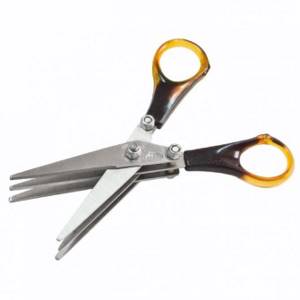
Carp Zoom Worm Scissors, for example, have multiple blades arranged in parallel to quickly cut up worms for adding to bait. The dismountable design makes it possible to clean all the parts of the scissors and, after drying them, put them back together. Plastic linings are comfortable and reliable. The model is perfect for those who catch “peaceful” fish and use animal ingredients in bait.
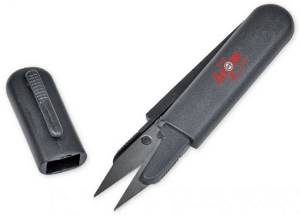
Another model from the same Hungarian company – Carp Zoom Pocket scissors CZ3149 – is designed for cutting fishing lines and is enviably compact. The handles are two movably fixed plates, which, when pulled apart, allow the blades to take their working position. When folded, a cap is put on them, and thus the scissors resemble a small pencil case. Using a specially designed clip, it can be worn on a waist belt, shirt or jacket pocket.
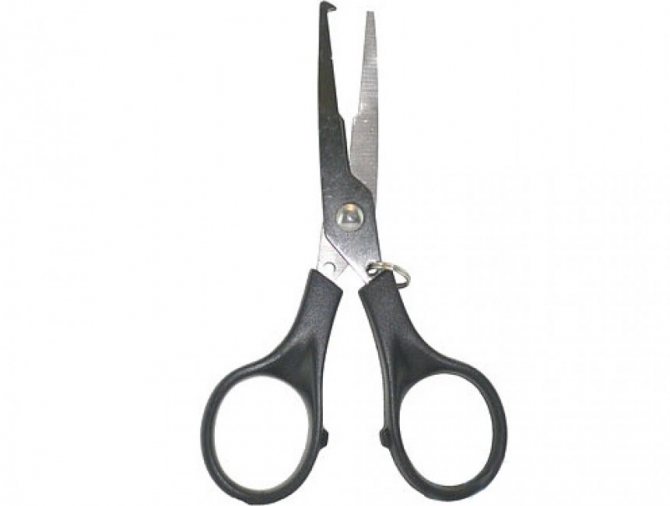
Fishing ROI QSS7101-B scissors are equipped with a protrusion for unclamping the winding rings. There are also cutting edges for fishing lines. The model is light and compact, effectively resists rust. An excellent option for sea fishing or use in a boat, when the pliers for expanding the rings are large and heavy. In order not to lose these scissors, it is possible to attach them to the retriever using a special fastening in the form of a ring on the handle.
Fishing pliers
Actually, these tools are called pliers only because they have an external resemblance to them and can, if necessary, perform their functions. Although their main purpose is to clamp pellet weights, cut fishing line, icecore or wire, unclamp the winding rings and, in some cases, remove bait from the mouths of predominantly predatory fish. There are models on sale that combine the ability to perform all or several of the above works.
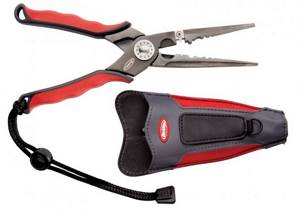
For example, with the help of the Berkley Nippers 9″ Multi-Pliers Tectanium Coated tool, an angler can carry out almost all types of work that may be needed while fishing. In addition, the elongated design of the lips allows, in the absence of special extractors, to free the fish from the hook. The advantage of this model is the reliability of the design and the coating of metal parts with layers of nickel and titanium, which, in addition to anti-corrosion resistance, makes the tool reliable in operation.
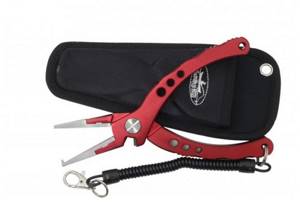
Among the less versatile models, the Fishing ROI ST-319SCL tool should be highlighted, which is designed for the two most frequently required jobs during fishing - cutting fishing line and unclamping the winding rings. It is made from high-quality aluminum alloy, the jaws are made from stainless steel, and the cutting edges are made from carbide metal, which holds an edge for a long time. The delivery set includes a retriever with a carabiner and a convenient case for wearing on a waist belt.
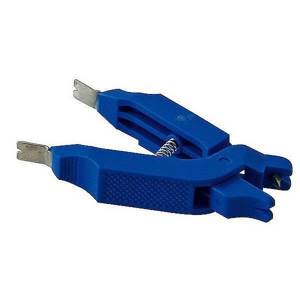
The Carp Zoom Lead Plier is sure to please floaters. The model is designed to work with pellet weights. They can be easily attached and just as easily removed without damaging the line using this simple and affordable tool. The return spring and plastic handles with anti-slip embossing greatly increase the ease of use.
Feeders
Needed for catching non-predatory fish. Structurally very similar to the donks described above, the difference lies in the frequency of casting. This should be done every five minutes, regardless of whether there is a bite. Externally they are similar to spinning models, but have their own classification according to class, length, and action.
Periods and characteristics of spawning in freshwater fish - a note for anglers
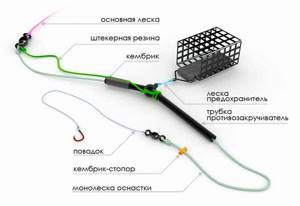
This tackle has the following features:
- Selection by test. Depends on the weight of the feeder - from 60 to 200 g.
- The length of the rod varies from 3.3 to 4.6 m;
- The coils used are inertialess.
The recommended spool volume of the latter is from 3000 to 6000. Installation of the cord or fishing line can be carried out in one of three ways - symmetrical, asymmetrical, inline or Gardner loop. The type of fish feeder is open, of various shapes. Recommended manufacturing material is plastic. In the latter case, you definitely need a weight.
Clamps, gappers
If fishing scissors, pliers and wire cutters have analogues for everyday, household needs, then clamps and yokes are purely fishing tools. In the vast majority of cases, they are used by spinning anglers to retrieve bait. The gapper is inserted into the toothy mouth of the pike so that it cannot close it, and with the help of a clamp the hooks of the wobbler or jig head are released, trying to cause as little harm as possible to the fish. Often both instruments are used in pairs, although they can also be used separately.
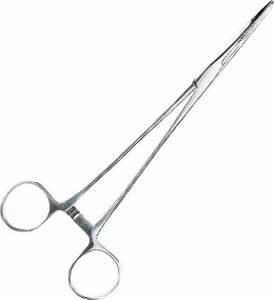
Affordable and quality, the Jaxon Bend Clamp is made from stainless steel. Slightly curved lip tips provide a more comfortable grip on the hook located in the fish's mouth. A convenient clamp reliably holds the lips in a compressed state; taking advantage of this property, fishermen often attach this tool to the edge of outerwear. This allows you to free up space in your pockets and always have a clip at hand in case you catch a fish.
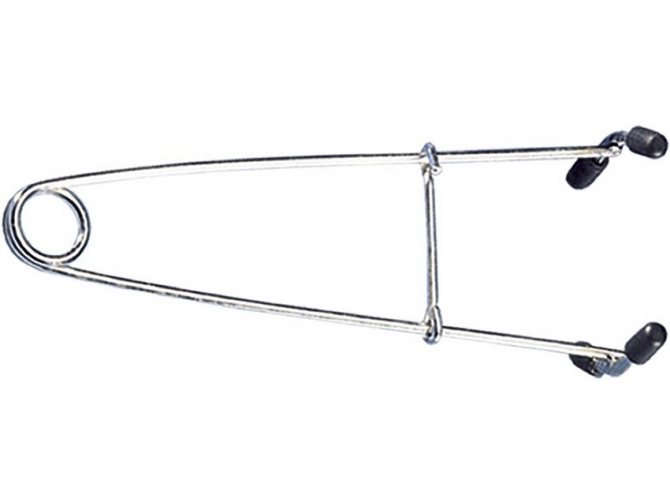
The Jaxon AC-33 yawn is a spring with elongated “shoulders” that push the powerful jaws of the fish apart to free it from the hooks. The delivery set includes a special clamp that holds the spring in a compressed state during transportation and storage of the tool. This model is made of stainless steel and is affordable.
Fishing tools can also include multitools, the design features of which and their optimal selection can be read about. Well, what is fishing without weights? Weighing your catch is one of the most enjoyable procedures! They are mechanical and electronic. Allows you to determine weight with high accuracy, usually in kilograms and pounds. Mechanical devices are more reliable. They remain operational even after immersion in water, which cannot be said about electronic ones. But they are more accurate and convenient, because they display weight on the display with an accuracy of thousandths of a kilogram.
Float rods
Quite a catchy tackle that is suitable for many types of fishing.
Rods of this type are divided into fly rods, match rods and Bologna rods:
- The length of popular “lapdogs” varies from 4 to 7 m. They are usually used for fishing on rivers with strong and medium currents. Equipment and installation are not difficult. These rods are suitable for spinning reels, which can be equipped with a friction clutch. The diameter of the fishing line used is 0.16-0.3 mm. Floats are of sliding type and blind type. In order to catch a certain fish, it is worth choosing a fishing hook that matches the lapdog, the right sinker, and also installing a leash.
- A match fishing rod is used to cast a sliding float of large mass. The rod itself consists of three parts, its length sometimes reaches 5.5 m. It must be assembled and disassembled at the place where the fishing takes place. This condition is associated with the properties of the types of equipment. This rod must be equipped with a “Match” reel. It requires a sinking line.
- The lightest of the float rods is the fly rod. On small rivers, fishing with it can be quite enjoyable. This is a real classic fishing, because it is used to catch fish by hand. And although the fishing rod can weigh about 100 g, the swing length sometimes reaches 8 m. Sets of equipment include a leash with a hook, a small weight, and a blind float.
For an angler, you should always have several sets of tackle on hand so that your fishing rod can be quickly re-equipped if necessary.
Let's sum up the results
As you can see, common household tools are of little use for fishing. In addition, they are simply unable to perform a number of necessary functions. Therefore, every self-respecting angler should have at least a minimum set of tools. Due to the wide functionality of some models, a sufficient number of tools can consist of just a couple of units. For example, for a floater, these are pliers with the ability to crimp weights, and line cutters. The spinner will need a tool with the ability to open the winding rings and remove the hook from the mouth, plus a gaper. At the same time, for each operation it is better to have a specialized tool that performs the functions assigned to it in the best possible way.
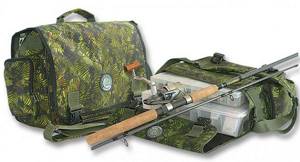
Our online store has a wide selection of both multifunctional and highly specialized tools belonging to different price categories. With their help, you can repair equipment, configure and adjust gear not only at home, but also on the shore while fishing. So choose and order! NHNCH everyone!!!


